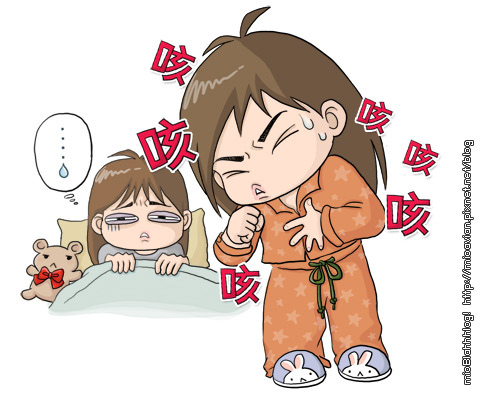Question
What are the mechanisms of cough caused by angiotensin-converting enzyme inhibitors, beta-blockers, and calcium channel blockers, and how can this adverse effect be managed?
Response from Jenny A. Van Amburgh, PharmD, CDE
Assistant Dean of Academic Affairs and Associate Clinical Professor, School of Pharmacy, Northeastern University, Boston, Massachusetts; Director of the Clinical Pharmacy Team and Residency Program Director, Harbor Health Services, Inc., Boston, Massachusetts
Although all 3 classes of antihypertensive drugs have been associated with cough as a side effect, the causal explanation differs between classes, and the level of evidence is strongest with angiotensin-converting enzyme (ACE) inhibitors -- a first-line antihypertensive drug class for many patients.
ACE inhibitors affect the renin-angiotensin-aldosterone system and block the conversion of angiotensin I to angiotensin II, which is involved in vasoconstriction. ACE inhibitors are associated with a dry, persistent cough in 5%-35% of patients who take them.[1] The mechanism of cough is likely multifactorial. ACE inhibitors prevent the breakdown of bradykinin and substance P, resulting in an accumulation of these protussive mediators in the respiratory tract. In addition, bradykinin can stimulate the production of prostaglandin.[1] This side effect is not dose-dependent and often precludes the use of all agents within the drug class.
機轉可以參考這邊:圖解藥理學-03RAA system 第二版
Beta-blockers are used for their antagonistic effect on cardiac beta-1 adrenoceptors. Two types of beta-blockers are available: beta-1 selective adrenoceptor antagonists (eg, metoprolol, atenolol) and nonselective beta-1/ beta-2 adrenoceptor antagonists (eg, carvedilol, propranolol, sotalol, timolol). Beta-2 receptor antagonism is associated with bronchoconstriction.[2] Baker[3] demonstrated that many commercially available beta-1 selective blockers have high affinity for beta-2 receptors. Therefore, both selective and nonselective beta-blockers may cause bronchoconstriction, which can lead some patients to experience a cough reflex.
Calcium channel blockers (CCBs) block calcium influx into cardiac muscle and vascular smooth muscle. Although there are reported incidences of cough associated with CCBs, the rates are low, ranging from < 1% to 6%.[4-7] A literature search for drug-induced cough associated with CCBs yielded no relevant studies or case reports. However, the search yielded studies on the potential antitussive benefits of CCBs.[8-10] It may be reasonable to suggest that the incidence of cough reported for CCBs may be more aptly associated with other concomitant antihypertensive medications for which cough is a well-documented adverse effect, such as the aforementioned ACE inhibitors.
Patients experiencing ACE inhibitor-induced cough often can be prescribed an angiotensin receptor blocker for hypertension without the cough risk.[1] For patients experiencing cough on beta-blocker therapy, ensure the cardioselective agent is at the lowest effective dose and underlying respiratory problems are being managed. Patients should not be withheld appropriate antihypertensive therapy due to cough.
The author wishes to acknowledge the assistance of Michael P. Conley, PharmD, Pharmacy Practice Resident, and Nga T. Pham, PharmD, Assistant Clinical Professor, Northeastern University -- School of Pharmacy and Harbor Health Services, Inc., Boston, Massachusetts.
整體降血壓機轉:
圖解藥理學 18 血壓用藥06
References
- Dicpinigaitis PV. Angiotensin-converting enzyme inhibitor-induced cough: ACCP evidence-based clinical practice guidelines. Chest. 2006;129:169S-173S. Abstract
- Lewis RV, Lofthouse C. Adverse reactions with beta-adrenoceptor blocking drugs. An update. Drug Saf. 1993;9:272-279.Abstract
- Baker JG. The selectivity of beta-adrenoceptor antagonists at the human beta1, beta2 and beta3 adrenoceptors. Br J Pharmacol. 2005;144:317-322. Abstract
- Norvasc? [package insert], New York, NY: Pfizer Inc; 2010.
- Cardizem? LA [package insert], North Chicago, IL: Abbott Laboratories; 2007.
- Felodipine Extended Release USP [package insert], Morgantown, WV: Mylan Pharmaceuticals Inc; 2007.
- Procardia? [package insert], New York, NY: Pfizer Inc; 2006.
- Kamei J, Kasuya Y. Antitussive effects of Ca2+ channel antagonists. Eur J Pharmacol. 1992;212:61-66. Abstract
- Franova S, Nosalova G. Antitussive effect of diltiazem in experimental conditions. Bratisl Lek Listy. 2004;105:203-206.Abstract
- Fogari R, Zoppi A, Tettamanti F, Malamani GD, Tinelli C, Salvetti A. Effects of nifedipine and indomethacin on cough induced by angiotensin-converting enzyme inhibitors: a double-blind, randomized, cross-over study. J Cardiovasc Pharmacol. 1992;19:670-673. Abstract






 留言列表
留言列表
 線上藥物查詢
線上藥物查詢 